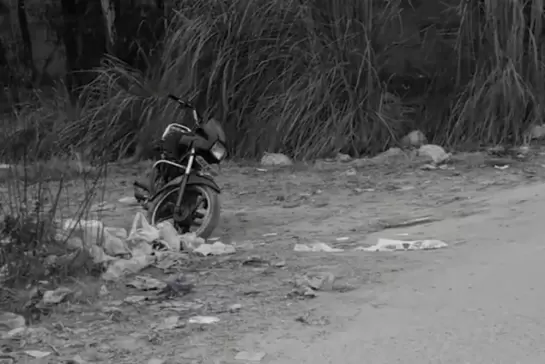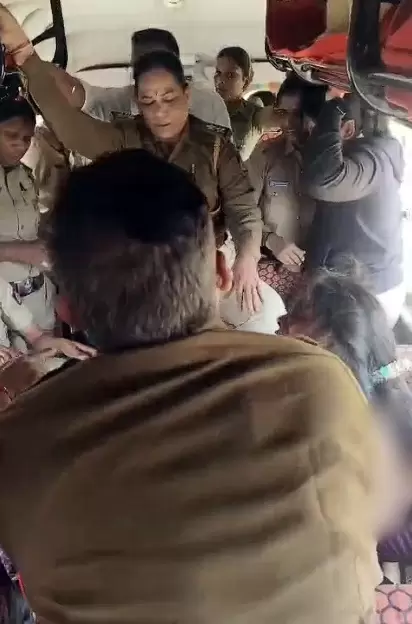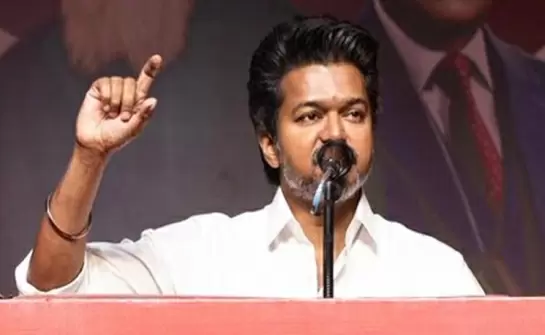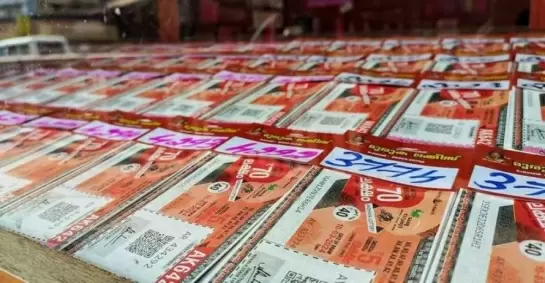Civil Society Activists Spell Out Action Plan to Meet the Development Challenges
18-October-2018
Absolute chaos prevailed in Satabhaya village of Kendrapara district in Odisha for several days since August 14 when rain and floods were wreaking havoc in distant Kerala.
More than 200 people from the village were working in the plywood industry in Kerala’s flood-ravaged Perumbavoor region and their families were clueless about their whereabouts for many days. Efforts to bring the workers back were futile largely because the families had no vital information about the firms, shops or establishments where their relatives were employed.
According to social activist Sudarsan Rout who works among Odisha’s migrant workers, the Odisha Government had no option other than just forwarding mobile numbers of workers stranded in Kerala to the Special Relief Commissioner of that state. The government had no list of migrant workers and had to solely depend on these mobile numbers.
According to papers presented at a session on Orissa’s migrant work force in the second edition of Odisha Vikash conclave held from August 24 to 26 in Bhubaneswar, people from 22 districts of Odisha were working in Kerala alone.
While traditional fishers from coastal Odisha work on boats that operate from harbours in Kerala, youngsters from Kandhamal, Dhenkanal, Kendrapara and Kalahandi are a major component of the work force in Kerala’s plywood industry. Similarly, women and girls from Balangir, Malkangiri, Sundargarh, Kandhamal, Ganjam, Nabarangpur and Rayagada work in the textile and apparel sector of Kerala.
“Though the Inter-State Migrant Workmen Act, 1979 makes it mandatory for registration of migrant workers, the same is hardly practised in Odisha. Labour contractors and agents send hundreds of workers illegally to other States which makes it difficult for the source State to identify and track the workers,” said Umi Daniel, Director of Migration and Education of Aide et Action International, a non-government organization, who inaugurated the session.
One of the key recommendations of the unique conclave, organised by Bhubaneswar-based Centre for Youth and Social Development (CSYD) in association with various non-governmental organizations and civil society movements, was for proper registration of the workforce heading for other States and insurance cover for wage loss in the event of exigencies.
Other than experts, the session was attended by relatives of workers, organisations advocating welfare of migrant labourers, and labour union leaders.
Sudarsan Rout said the conclave demanded setting up of an Odisha Migrant Workers Welfare Board (OMWWB) with corpus funds for the welfare of vulnerable migrant workers. It also proposed strengthening of interstate coordination and facilitation centres at both source and destination locations to ensure workers’ safety especially during calamities.
Most speakers at the conclave pointed out that the pace of development has slackened in Odisha owing to social exclusion, malnutrition, and fall in education quality. Four out of 10 children in the State are undernourished and suffer from mental disorders largely because of unhealthy environment, unhygienic practices, and the lack of adequate nutrition and balanced diet.
“You may have seen development conclaves across the country with governments as chief organizers and corporates, business tycoons and messiahs of crony capitalism as speakers. The core issues concerning the larger segment of the society remain unaddressed and major projects eating into land, resources and livelihood would be formulated.
“This development conclave was an exception in its vision and concept. It was a case of civil society coming together for asserting its rights and listing its priorities,’’ said Jagadananda, convener of the conclave and co-founder of CYSD.
“Poverty, social exclusion and high levels of inequality are affecting Odisha. At the conclave, we were trying to evolve an integrated approach that would meet the development challenges,’’ he said.
The first edition of the conclave was held in 2016, though it was experimental in nature. In the second conclave, 2,670 delegates representing civil society organisations, government, academia, intelligentsia and the media congregated in Bhubaneswar for intense deliberations on the future of the State.
In the three-day event, the participants delineated clear action agendas on 19 critical development issues of the State like tribal empowerment and development, women and violence, forest and non-forest commons, food and nutrition security, rain-fed agriculture, employment and migration, green skill and entrepreneurship development, school education and quality learning, health and wellness, drinking water, sanitation and hygiene, river ecology, inclusive governance, fiscal management and social accountability, democratizing urban governance, Panchayati raj (local self-governance), disaster and climate change action, the role of corporate sector in localizing SDGs, university community linkage, social exclusion and inequality and child rights.
Dr Rajiv Kumar, vice-chairman of NITI Aayog, who took part in the deliberations, assured the gathering that the proposals from the conclave would be subjected to a process of inter-ministerial consultation. On its part, representatives of the Odisha government promised to hold periodic dialogues on the conclave recommendations and to highlight key provisions of it as developmental priorities.
The marathon deliberations at the conclave recommended enhanced transparency and accountability in the local self-governance system through proper bottoms-up participatory planning apart from implementing and monitoring welfare schemes and programs.
Doubling the budget of MGNREGA, reaching out to at least 50% of job card-holders and ensuring 100 days’ employment to 25% job card-holders were the other major recommendations.
Increase in public spending on health to 2% of GSDP by the next 3 years and providing quality and affordable health care in private sector were suggested too. Among the other proposals were close monitoring of health insurance schemes, enhanced investment in building human capital through higher levels of resource commitment for social sectors, especially education; promotion of rainfed farming systems including livestock and fishery and development of farmers’ resource centres that can act as convergence points for rainfed areas in all districts.
The conclave stressed the need for enhanced focus on conservation of water, promoting decentralized water supply systems rather than mega piped water supply systems. While dealing with nutrition, it recommended a lifecycle approach with a focus on first 1,000 days, promoting lactational management units, creche services for pre-school children and home visits at critical life stages.
Activating area sabhas and slum improvement/ welfare boards in urban areas; ensuring 100% RTE compliance in schools by the next academic year; and adequate budgetary allocations for proper curricular and co-curricular activities through well-defined School Development Plans (SDPs) are its recommendations in the educational sector.
Re-activating the Regional Imbalance Commission to address inequality by taking blocks as the lowest possible unit, bringing the State Finance Commission around to prioritising the backward rural and urban local bodies plagued with gross inequality, universalising social security pension and fixing it at a minimum of the half of minimum wages per month are also part of its proposals.
It has also recommended inclusion of the third gender in all facilities, rights and entitlements apart from preparing and empowering communities to undertake local Hazard-Risk-Vulnerability (HRV) analysis. The conclave also sought restrictions in the transfer of patta land of tribals to non-tribals. Implementation of an inclusive river policy and setting up of a river science institute to promote research for effective management of river basins also formed part of the recommendations.
“We are very keen on tribal self-governance as tribespeople form 22.8% of the State’s population. They lag behind in all spheres of life. We are also stressing the need for evolving a State policy for mother tongue-based pre-schooling in tribal areas,’’ said Jagadananda.
In the healthcare sector, he favours increased spending on primary care. According to social activist Jagdish Pradhan, who took part in a number of sessions at the conclave, the organisers deserve appreciation for preparing and bringing into public domain comprehensive fact sheets on all the 19 critical development issues.
Each fact sheet carries the latest figures, authentic information from government and NGOs and suggestions based on facts for the way forward. Jagadananda said the fact sheets had been released as a compendium at the end of the conclave so that they could be used in policy making and implementation.
“Inclusive growth is what we have been advocating for decades. The marginalised must be brought back to the mainstream. They must get proper representation in policy making and implementation,’’ he said.
According to him Odisha needs more focus on sustainable livelihood options, water sanitation, tribal development, disaster risk reduction, financial inclusion, increased investment on public health, rainfed agriculture, food security, social security and fiscal management.
“Then the State can be transformed as a model for the rest of the world.” The United Nations Development Programme’s Human Development Index (HDI) shows an average of health, education and income indices of different regions of the world.
In 2011, Odisha’s HDI score was 0.442, way behind the national figure of 0.504. It was in that context the idea of the Vikas conclave was mooted. “Despite the numerous opportunities, Odisha is still poor. The State needs efforts from all levels for development. Civil society can contribute a lot. And we are now providing a stable foundation for it,’’ said Jagadananda.
Two Hindu Men Killed In Bangladesh Within 24 Hours Amid Rising Attacks On Minorities
IMD Warns Of Heavy Rain In TN On Jan 9–10 Due To Bay Of Bengal System
BMC Elections: Thackeray Cousins Unite as BJP Pushes Global City Agenda
Madras HC To Deliver Its Verdict Tomorrow On Thiruparankundram Hill Lamp Case
Trump Says He Watched Maduro Raid From Mar-a-Lago









